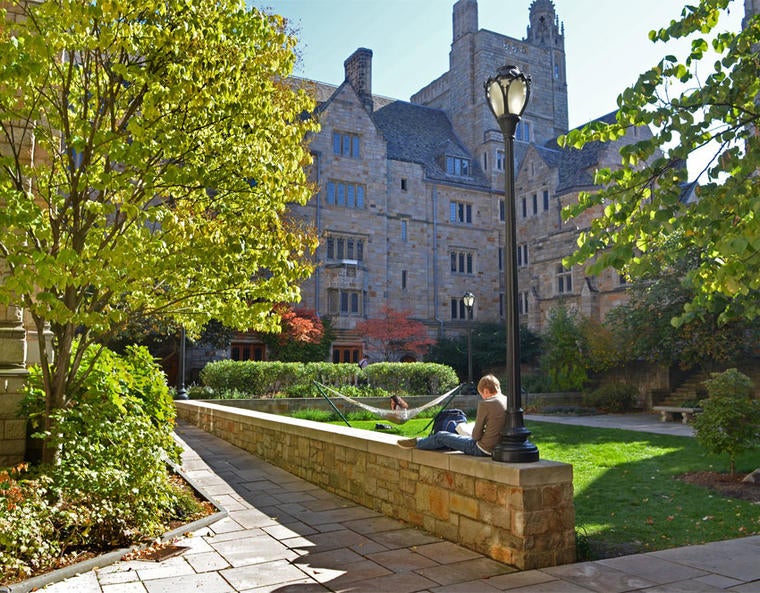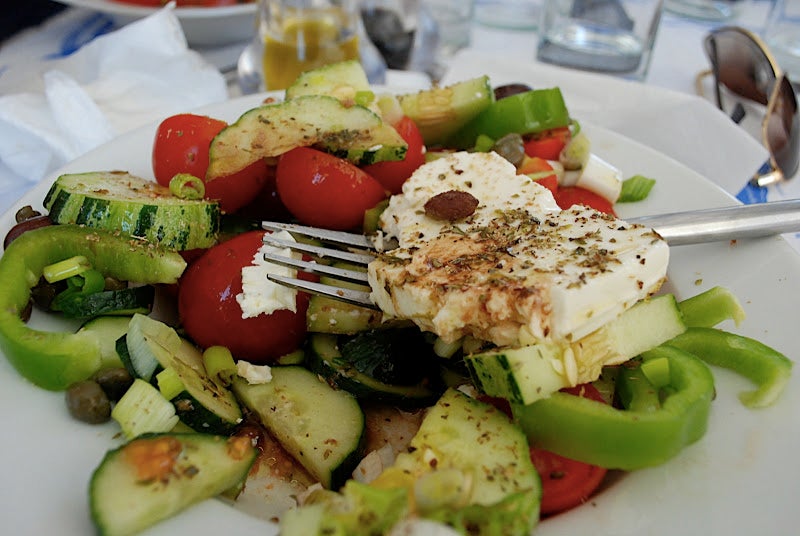
One of the best parts about traveling is the food. (As my friend, Uzra, points out, food explains the world.) I am never disappointed by the discovery of a completely different palate, a new array of tastes and textures and smells and ways of eating.
Greek food, especially, encapsulates its East-meets-West history. Greece is nestled at what seems the center of the world. It has been both a gift and a curse, explaining its shipping prowess and riches as well as its Ottoman invasion. It is close to the Middle East (or West Asia)—and the Far East—and equally close to Western Europe.
The Ottoman influence on the food is massive. Stuffed grape leaves, tzatziki (yoghurt with cucumber and garlic), gyros (chicken, pork, beef, or lamb sliced off of a turning roasting pit served in hot pita and often with potatoes and tzatziki), moussaka, mezze (think Spanish tapas), the Greek version flaunting small plates of delicacies like feta dripping in olive oil and oregano and saganaki (fried yellow cheese). I’ve officially had mezze in Turkey, Syria, Lebanon, and Greece, and I can say none was better or worse than the other. Everything is scrumptious, and you have such a range to choose from—probably some of the rare instances I’m not crippled by choice.
If I could sum up Greek cuisine (though cuisine can’t really be summed up), I’d say it’s about the cheese (feta is definitely my favorite, and Greek copyrighted so I am enjoying it here), the olive oil, and the honey (meli). I just bought 500g of orange honey from Myconos this past weekend and don’t regret it a bit.
Other particularly Greek things have been oregano chips (delectable); more goat and lamb than beef; Goody’s—a fast food chain that has caused McDonald’s to shut down!; and their salads. I can’t get enough of Greek salad (tomatoes, cucumbers, red onions, feta, olives, all dressed with olive oil).
But maybe what’s more important than the food here is the culture that surrounds it. People spend hours eating together and often eat late and into the late hours. While visiting Athens for the first time, it was perfectly acceptable and expected to eat lunch at 4:30 pm or dinner at 10 or 11. And once you sit down to eat with friends or family, you chat for at least two hours, unwinding, eating slowly, grabbing seconds, thirds, dessert, extra drinks.
We were treated to one of our first meals in Athens by Dionysis, our Bulldogs in Athens point person who is so much more. His curly, black hair is scooped back in a ponytail longer than mine. He is slim and fits into the latest hipster jeans and looks completely normal in Threadless-style shirts. He was a college student inside and out. Once an economics major, he switched tracks and followed his passion: art. He now runs his own gallery and I can’t wait to check out his work on Monday on site.
He is gregarious, friendly, and has a tendency to never really answer your question, but in his own way, address your concerns. “Dionysis, is there a place to run around the apartment?” I emailed him before I got to Athens. “The neighborhood is very nice,” he replied, addressing safety without me asking.
Our first meal, we walked around until we found a nearby tavern. We ordered greens (spinach-like leaves boiled and served with lemon), burgers (apparently, just ground meat cooked with cheese inside), feta in phyllo dough fried and drizzled with honey, sausage, pork. I ordered what I think now is lamb kleftiko, or lamb slow-cooked on the bone in a clay pot. For dessert, we ordered halva (semolina)—very similar to the South Asian suji. Before we knew it, 8 pm had turned into 11 and we were ready to conquer whatever Athens and Greece had in store for us, with Dionysis’s wise words ringing in our heads.
